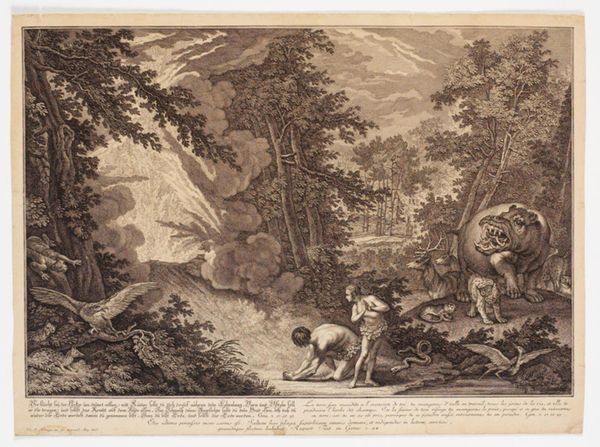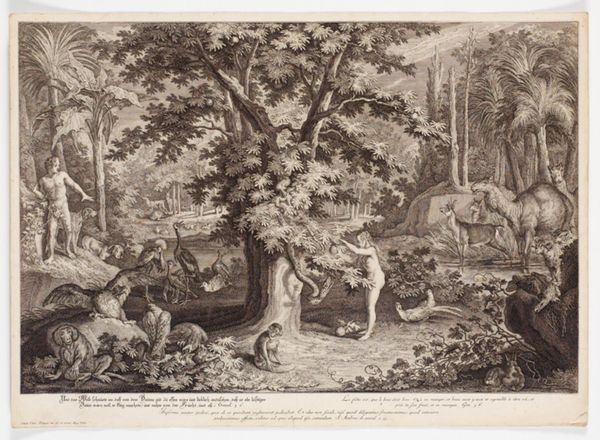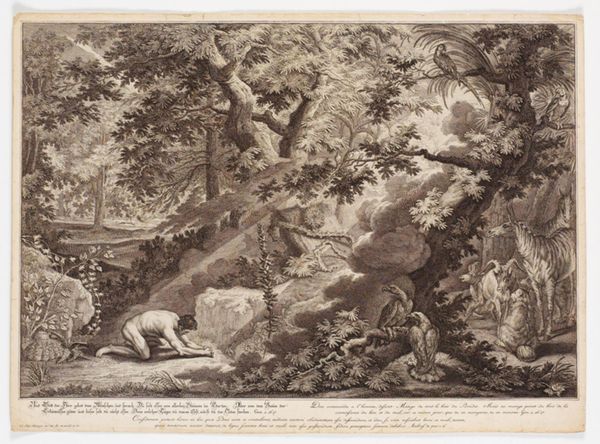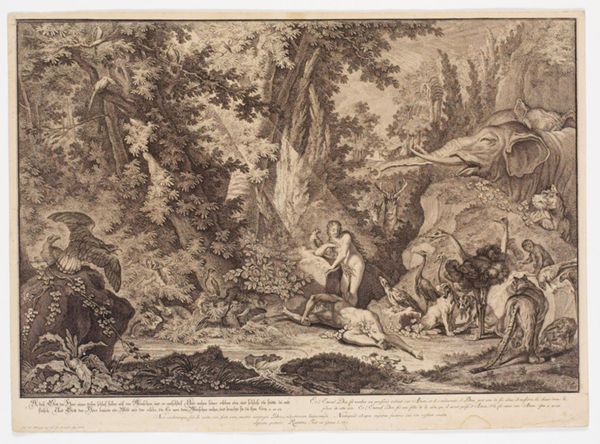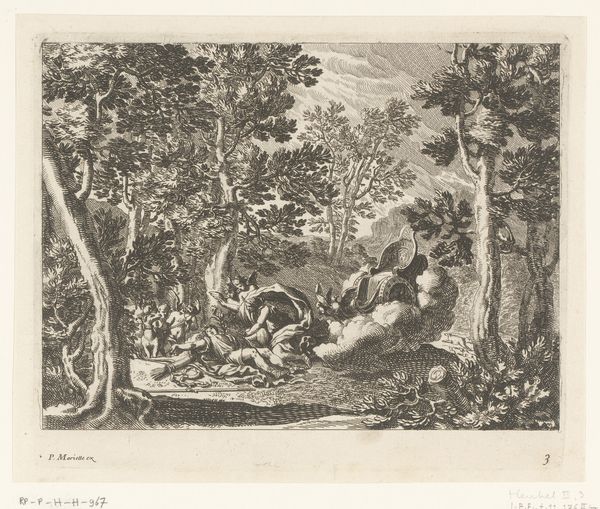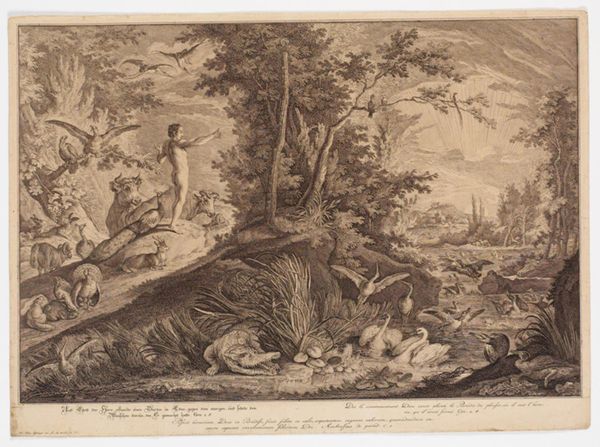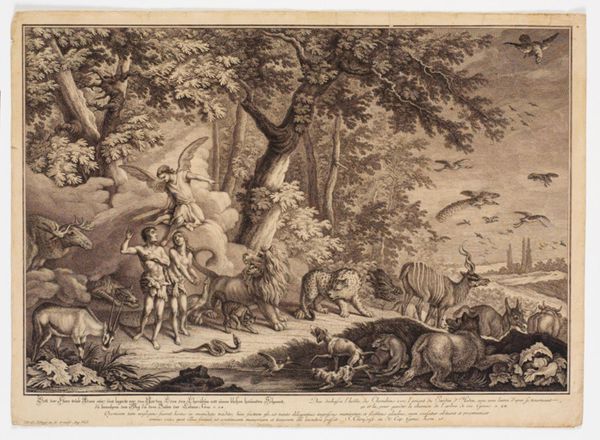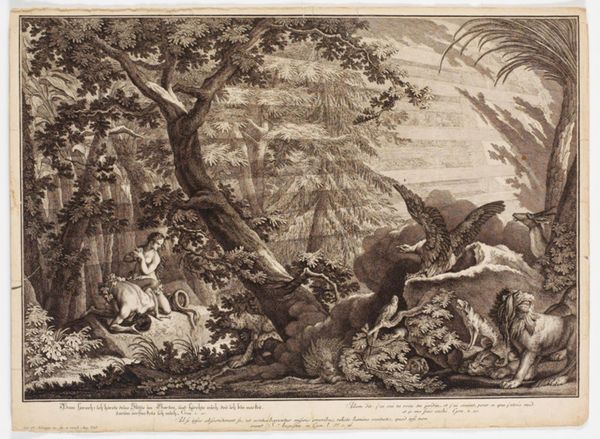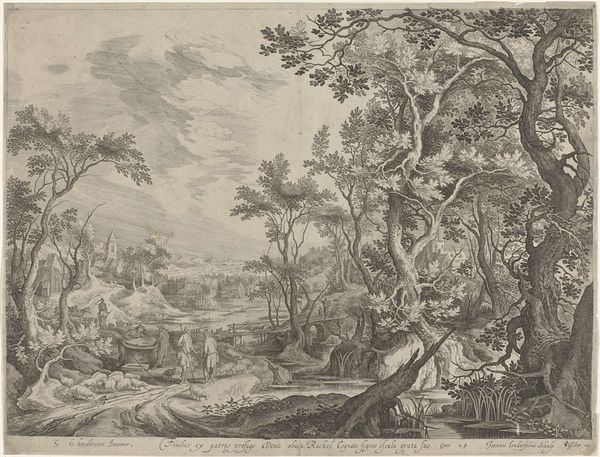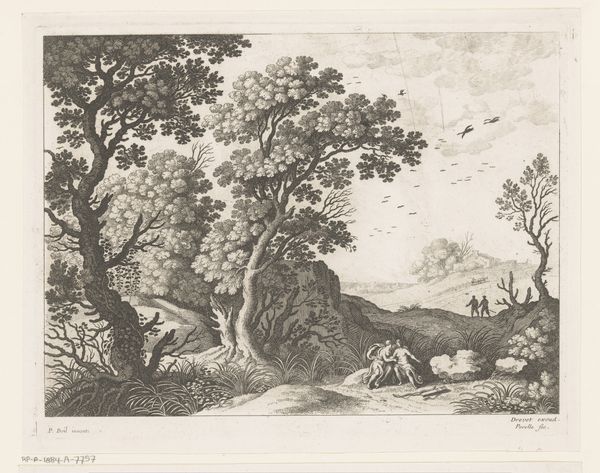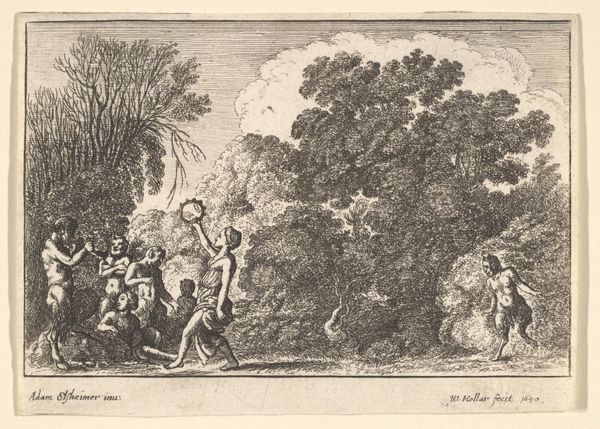
print, etching, engraving
#
baroque
# print
#
etching
#
landscape
#
figuration
#
history-painting
#
engraving
Dimensions: 393 mm (height) x 540 mm (width) (bladmaal)
Curator: Johann Elias Ridinger created this engraving, "Adam's First Meeting with Eve," in the 18th century. Editor: It feels so innocent, doesn't it? Like a woodland fairytale, yet the scene is so intensely charged with what's to come. I see such vulnerability. Curator: Ridinger situates this biblical first encounter within a broader theological and societal framework. Here we see Eve almost presented as a gift, handed to Adam within the accepted power dynamics that underpin creation narratives and their subsequent cultural interpretations. The submissive pose is loaded. Editor: Look at all the pairs of animals surrounding them! The artist meticulously places them as witnesses. Aren't they more than just decorative flourishes? They symbolize the natural world's harmony, pre-Fall of course, and by extension the promise and purity of Adam and Eve's bond. Notice how he even varies textures from the softness of fur to the sharp detail of feathers? It creates an overwhelming impression. Curator: And how interesting that Eve’s modesty is somewhat attended to, cloaked in foliage while Adam is completely bare, reflective of historical gendered anxieties in pictorial depictions. These details tell a very specific story of power and culpability through an arguably patriarchal lens. Editor: And yet there's an echo of melancholy woven in. A serpent is ever-present lurking just in the shadow—it represents that future moment in the garden's arc: knowledge gained and paradise lost. And you see that mirrored in Adam’s open hand: acceptance but perhaps also unknowing expectation of the coming struggle? Curator: Exactly. Placing this in its historical context—Europe still entrenched in colonial pursuits—we can read the garden motif not merely as a space of blissful ignorance, but also a powerful metaphor for seized lands, exploited resources, and disrupted natural orders, further complicating the representation of innocence here. Editor: Ultimately, the symbolic weight is remarkable! The landscape’s role echoes the spiritual tensions embodied by the protagonists— it's heavy laden. Curator: This artwork gives us so much to unpack regarding identity and the enduring politics embedded within religious narratives. Editor: And for me, a window into how we have symbolized purity, promise, and eventual sorrow throughout centuries.
Comments
No comments
Be the first to comment and join the conversation on the ultimate creative platform.
